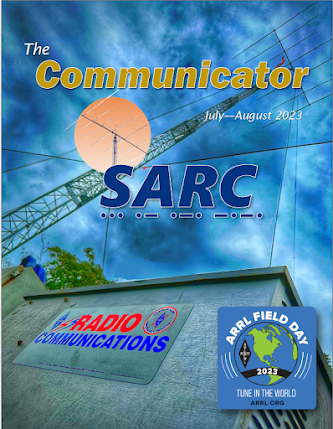This publication, "The Communicator" from Surrey Amateur Radio Communications (SARC), serves as a bi-monthly electronic periodical for amateur radio operators. It covers a wide array of topics, including historical figures in radio. This month Jonathan Zenneck and Edwin Armstrong. In this issue we also provide technical explanations of radio propagation phenomena such as the Gray Line and solar indices, and practical guides for amateur radio activities like building antennas. We take a closer look at specific radio equipment (Baofeng, Icom, and Anytone), and engaging in digital modes like FT8.
The Communicator also features emergency preparedness strategies, and the diverse interests and community focus within amateur radio. Furthermore, it touches upon innovative developments like the Linux Handie Talkie (LinHT) and the importance of in-person technical conferences for knowledge exchange.
Now read in over 165 countries, this issue brings you 130 pages of Amateur Radio content from the Southwest corner of Canada and around the globe. With less fluff and ads than other Amateur Radio publications, you will find Amateur Radio related articles, projects, profiles, news, tips and how-to's for all levels of the hobby.
Previous Communicator issues:
Search for past Communicator issues
We now have a comprehensive searchable index back to 2007
HERE.
As always, thank you to our contributors, and your feedback is always welcome.
The deadline for the next edition is October 15th.
If you have news or events from your club or photos, stories, projects or other items of interest from BC or elsewhere, please contact us at communicator@ve7sar.net
73,
John VE7TI
'The Communicator' Editor
The Table of Contents for the September - October 2025 Communicator issue:
- The Unsung Pioneers: Jonathan Senneck 4
- A look at Edwin Armstrong’s contribution to broadcasting 6
- Field Day and Cross-Border Microwave Activity 7
- The Northern California DX Foundation: Decrypting solar indices 8
- Propagation Profile: Exploring the Gray Line in Radio Propagation 10
- News You Can’t Lose: Rescue team locates and rescues 12
- Page13—News You Can Lose: Mystery in Back Yard 13
- Radio Ramblings: Aircraft Radio Systems 14
- Another RFI Tracker 29
- Sniffing RF Noise with an Oscilloscope 29
- A Bridge Too Far... For Now! 30
- An AM Radio Transmitter Suitable for in-home broadcast 32
- ISED Releases New Documents for Amateur Exams 34
- Getting Started: Beginner's guide to the FT8 mode 36
- Using the Baofeng Radio: Your Guide to a Handheld Radio 37
- iCOM Special Interest Group: RFI & Noise reduction - USB cable 38
- WA5VJB’s "Cheap Yagis": Looking for a 1.2 Ghz solution? 41
- RigPi: Probably compatible with your rig 422
- The AnyTone 878 portable receives a major firmware update 44
- Ham TV again from the International Space Station! 46
- After 14 attempts our first circumnavigation of a pico balloon! 47
- The PERformer: 2024 ARRL QST Antenna Design Competition 50
- But, does it PERform? 59
- Ham Radio Outside the box: Testing the “PERformer” 60
- The Zenith Satellite Tracker 62
- Another Simple Morse Code Trainer: It uses only 7 parts 63
- High Altitude RF Adventures 64
- Hamshack Hotline Orphans invited to apply at Hams Over IP 69
- Zero Retries: The Linux Handie Talkie 70
- Ham on a Bike: Snatched a big one working my grey line 75
- Foundations of Amateur Radio: A POTA procedural proposal 76
- Listening to local RF via a web browser 78
- Back to Basics: Understanding decibels in Amateur Radio 80
- Crossword 83
- Danger in St. Elmo 84
- No-ham Recipes: Chili Con Rotini 85
- Profiles of SARC members: Michael Papp WB6GJE 88
- The SEPAR Report: Emergency Program: Net Strategies 92
- A new beam antenna for the OTC 95
- QRT: Building Your Own Antennas 96
- HAM LEFTOVERS... 98
- A look back at The Communicator—October 2015 100


































